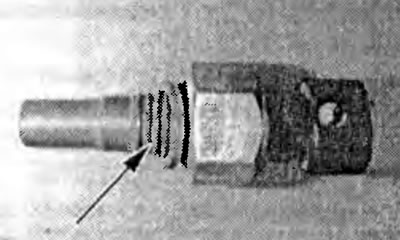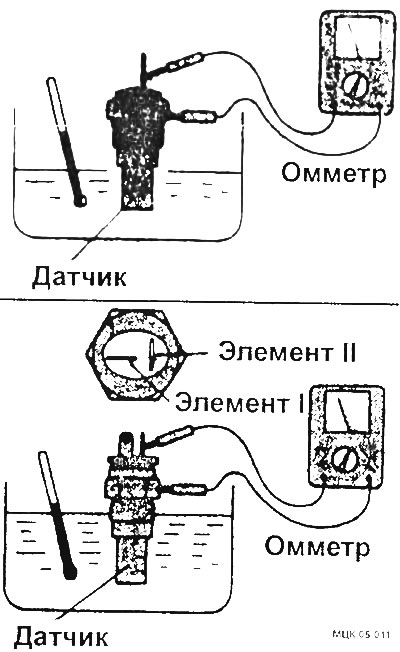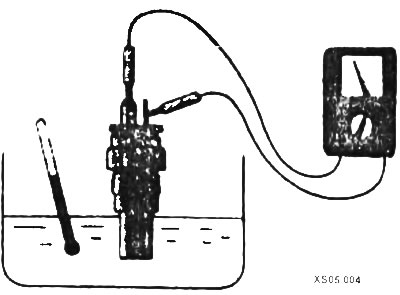In a diesel engine, from pin 1 the signal goes to the coolant temperature gauge, from pin 2 to the heating system.
Checking the coolant temperature gauge sensor
Disconnect the connector from the temperature sensor.
Turn on the ignition and watch the temperature gauge.
Touch the sensor connector to the mass, the pointer arrow should be in the extreme maximum position. If the arrow does not point to the maximum reading, you should check the correct installation and contacts of the sensor connector, also check the electrical wires and connection points on the dashboard according to the electrical diagram. If there is a maximum reading, remove and replace the sensor.
To prevent coolant from escaping when the sensor is removed, it must first be partially drained and collected.
Apply sealant to the sensor threads.

Fasten the temperature sensor with a force of 10 Nm, put on the connector.
Add coolant.
Carry out a test drive and check the temperature sensor connection for leaks.
Checking the coolant temperature sensor in the removed state
Disconnect the connector and unscrew the temperature sensor.
Connect an ohmmeter and warm up the temperature sensor in a water bath.

Required values for petrol engines:
- at 70°C: 104±13.5 Ohm;
for diesel engines:
- at 70°С 104±13.5 Ohm (element I);
- at 20°С: 3.25±0.33 Ohm (element II).
Apply sealant to the threads of the temperature sensor.
Fasten the sensor with a force of 10 Nm and for diesel engines 30 Nm. Put on the connector.
Add coolant.
Carry out a test drive and check the temperature sensor connection for leaks.
Checking the temperature sensor of the injection system
Disconnect the connector and unscrew the temperature sensor.
Connect an ohmmeter and warm up the temperature sensor in a water bath.

Required values:
- 2.45±0.24 kOhm at 20°C;
- 296±32 Ohm at 80°C.
Apply sealant to the threads of the temperature sensor.
Fasten the temperature sensor with a force of 30 Nm, put on the connector.
Add coolant.
